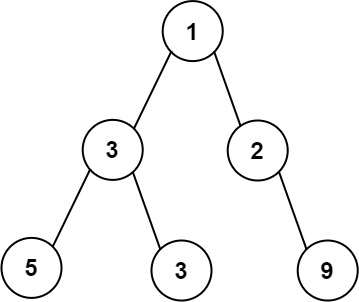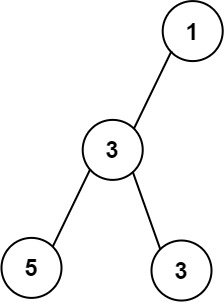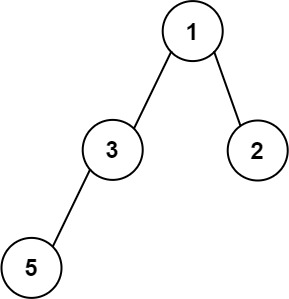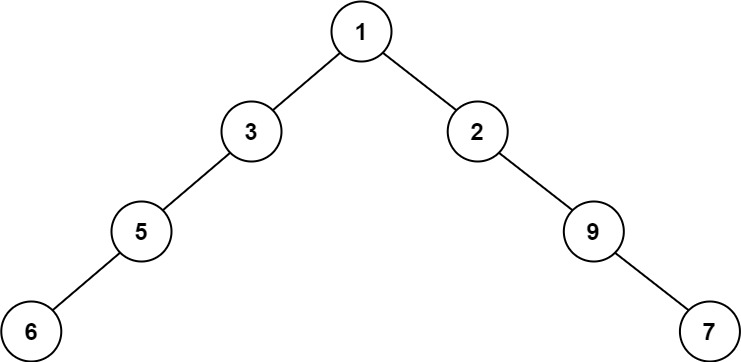< Previous
Next >
Given the root of a binary tree, return the maximum width of the given tree.
The maximum width of a tree is the maximum width among all levels.
The width of one level is defined as the length between the end-nodes (the leftmost and rightmost non-null nodes), where the null nodes between the end-nodes are also counted into the length calculation.
It is guaranteed that the answer will in the range of 32-bit signed integer.
Example 1:

Input: root = [1,3,2,5,3,null,9]
Output: 4
Explanation: The maximum width existing in the third level with the length 4 (5,3,null,9).
Example 2:

Input: root = [1,3,null,5,3]
Output: 2
Explanation: The maximum width existing in the third level with the length 2 (5,3).
Example 3:

Input: root = [1,3,2,5]
Output: 2
Explanation: The maximum width existing in the second level with the length 2 (3,2).
Example 4:

Input: root = [1,3,2,5,null,null,9,6,null,null,7]
Output: 8
Explanation: The maximum width existing in the fourth level with the length 8 (6,null,null,null,null,null,null,7).
Constraints:
- The number of nodes in the tree is in the range
[1, 3000].
-100 <= Node.val <= 100
[Tree]
[Depth-First Search]
[Breadth-First Search]
[Binary Tree]
 Documentation
¶
Documentation
¶